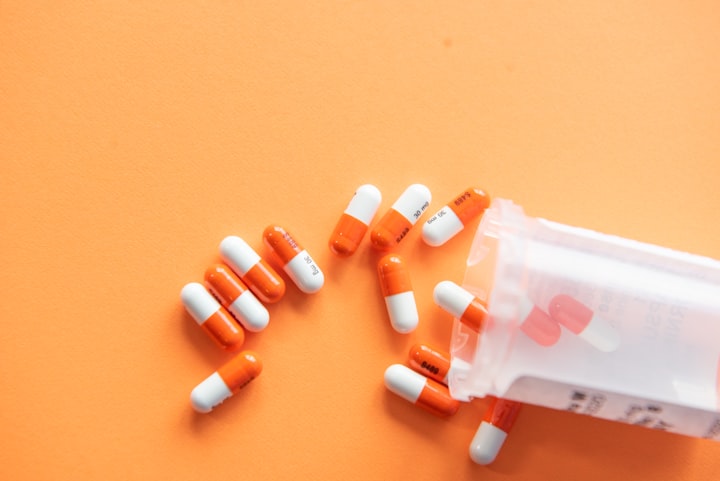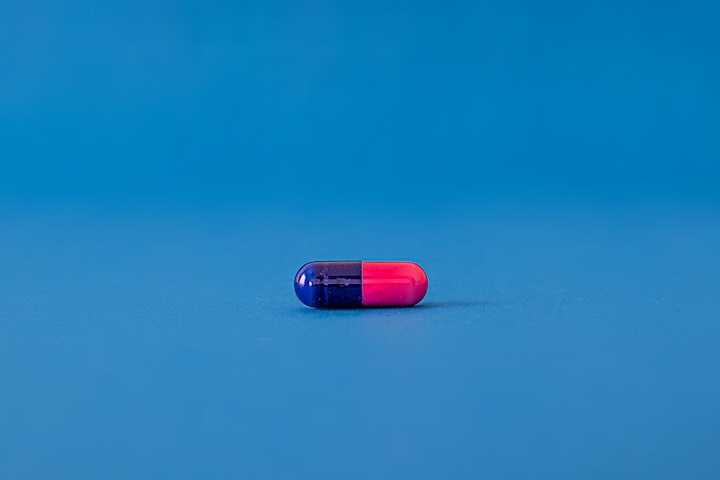The Side-effects of Pills
The hormones in the so-called micro-pill not only prevent pregnancy but can also have side effects. How dangerous are they?

It is our most popular contraceptive: the birth control pill. According to the Federal Center for Health Education, 47 percent of women between the ages of 18 and 49 take them to protect against pregnancy. In most cases, it is the so-called micro-pill, which contains a combination of the sex hormones estrogen and progestin. The so-called mini-pill, which contains two progestogens and no estrogen, is prescribed less often.
The preparations with estrogen and progestin, known as micro pills or combination pills, are repeatedly criticized for their side effects: in some women, they cause weight gain, in others, they affect the mood, and in others the breasts are tense. Since 2019, there has been a warning about an increased risk of depression in the package insert. The higher risk of venous thrombosis, i.e. the risk of a blood clot in the veins, especially the leg and pelvic veins, is a known side effect. Typical symptoms are pain or swelling in the leg. One of the possible consequences is pulmonary embolism. It can be accompanied by shortness of breath or chest pain and can be fatal.
Pill increases the risk of thrombosis
If around two to four out of 10,000 women usually develop leg vein thrombosis each year, it is around three times as many with low-dose combination pills (micro pills). "First-time users in the first year of use have the greatest risk," says Dr. Sabine Segerer, a specialist in gynecology and obstetrics, gynecological endocrinology, and reproductive medicine at the Amedes Center Hamburg. "Basically, the risk of thrombosis from the pill in young women without risk factors is not very high," said the expert. For comparison: natural hormone changes often increase the risk of thrombosis more. For example, in one study, there were 29 cases per 10,000 women during pregnancy.
Thrombosis: There are also other risk factors
Nevertheless, one should not neglect the risk posed by the pill. For many women, there are also other factors - and then the risk of vascular occlusion increases further. For overweight people, for example: the greater the weight, the greater the risk of venous thrombosis. With a body mass index of more than 30, double to five times. Taking combination pills can increase the risk even further.
Another dangerous constellation: if the woman has already had thrombosis or a family history of thrombosis. "If there is a familial accumulation, it must be examined whether a so-called Factor V Leiden mutation or other coagulation disorders are present," says Segerer. In connection with the pill, some of them lead to a significantly increased risk of thrombosis. They are determined by blood tests.
Pill: strokes are also more common
But other vessels are also at risk. Vascular occlusions can lead to a stroke, for example. Additional risk factors for this include smoking and high blood pressure. "Smoking increases the risk of thrombosis eight times, for example," says Segerer.
"The doctor clarifies all of these factors in conversation with the patient before prescribing a certain preparation," says Segerer. From the information, he deduces which pill is suitable for the woman. Because: The above-mentioned risk of thrombosis for women who take the pill is only an average value. The actual rate differs considerably from product to product. "If a thrombosis has been overcome, certain pill preparations are eliminated, for example," says Segerer. "The same applies to women who suffer from migraines with aura. They should not take any combination preparations. For these patients, the combination pill increases the risk by six times."
When talking to the doctor, women should definitely address the points mentioned on their own initiative.
The thrombosis check:
In order for your gynecologist to find the right pill for you, he or she will examine you thoroughly and assess your risk of thrombosis. Among other things, he asks:
Do you smoke? If so, how much? Have you ever had thrombosis or pulmonary embolism? Are there any cases of thrombosis, pulmonary embolism, or cardiovascular disease in your immediate family (parents, siblings)? Do you suffer from high blood pressure? Do you take hypertension medication?
Pill: the right preparation
The doctor decides whether the pill is suitable and which preparation is suitable, taking the patient's individual situation into account. "There is no such thing as a blanket pill," says Segerer. "You cannot generally advise against any preparation, nor can you recommend one for everyone." The following points influence the doctor's decision for or against a specific preparation:
Estrogens: Ethinylestradiol (EE) is the most commonly used synthetic estrogen in combined pills. The German Society for Gynecologyand obstetrics advises the lowest possible ethinylestradiol content, preferably between 20 and 35 micrograms. "There are hardly any pills with a higher ethinylestradiol dosage anyway," says Segerer. Natural estrogens, such as estradiol, have been approved in combination preparations for several years. The European Medicines Agency (EMA) recently approved another combination preparation with natural estrogen, Estetrol. What is special is that Estetrol can only be detected in the body during pregnancy. "Preclinical studies indicate a slight influence on blood coagulation. However, there are no further studies that monitor the risk of thrombosis. Therefore, we cannot say at the moment not be used in high-risk patients. "
Progestins: Older combination pills contain levonorgestrel, norgestimate or norethisterone as a progestin. "They can have various androgenic side effects," says Segerer. That means: In women with a corresponding predisposition, acne could intensify, hair loss could occur or the body hair could increase. "These side effects should be avoided with the newer preparations," says Segerer.
According to various studies, however, newer progestins - such as desogestrel, gestodene, dienogest, and drospirenone - are suspected of increasing the risk of thrombosis more than their predecessors. "In the last meta-analysis On this topic from 2018 it was shown that preparations with the older progestins such as levonorgestrel and norgestimate are the safest with regard to the risk of thrombosis, "says Segerer." Nevertheless, the choice of the progestogen content of a pill is always an individual decision. "It applies according to the official recommendations for doctors to adapt the choice of preparation to the patient's situation and risk profile.
The Pill increases the risk of depression
It has also been known for a long time that the hormones in birth control pills can influence mood. However, on the occasion of the results of a Danish study, the Federal Institute for Drugs and Medical Devices decided at the beginning of 2019 that a warning in the instruction leaflets of all hormonal contraceptives would indicate an increased risk of depression and suicide-should draw attention. According to the institute, the warning should ensure that the doctor and pharmacist provide appropriate information and make women aware of the need to see a doctor if they have symptoms. "Since the study is only a database survey, no clear causal relationship can be derived," says Segerer. She thinks it makes sense that the warning was included anyway. "From now on, we doctors will provide even more information and respond to the relevant symptoms."
Side effects often decrease over time
Most of the side effects occur in the first year of use. This affects the risk of thrombosis, the risk of depression, but also other possible side effects such as weight changes or intermenstrual bleeding. "Large studies have shown that although weight fluctuations occur under the pill, the bottom line is that there are no significant changes in weight," says Segerer. "But that can happen on an individual basis." The same applies to other minor side effects, such as intermenstrual bleeding. "That is why it is worthwhile to wait and see if there are minor side effects and not to change the preparation straight away," says Segerer. If the problems don't go away, the woman can try another pill or another form of contraception.
About the Creator
Sarmad Mayo
If you are looking for a New side Hustle, Selling Feet Pictures is a lucrative venture for you to start Today.
Sell Feet Pictures on FunwithFeet






Comments
There are no comments for this story
Be the first to respond and start the conversation.